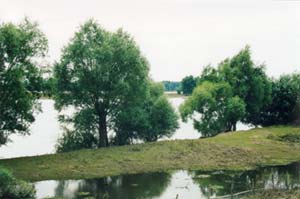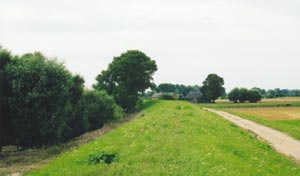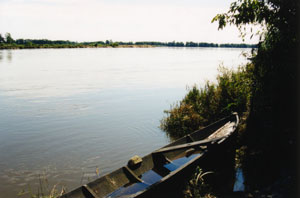 |
 |

|
Living with the River |
|
|
Living with the river means knowing and accepting the rules of the river.
Vistula bank near Płock - Photo by: Jutta Dennerlein, 2001 The knowledge of building drainage canals and using wind power to pump out superfluous water had helped the German settlers to gain new land from the under sea level areas around Danzig and it was also useful when settlers moved upstream Vistula to gain new land from the swamp lands along the river. But living with the river Vistula also meant living with the flood. |
|
|
The free-flowing Vistula regularly was swollen in spring and often also in summer. Particularly dangerous were the spring floods going along with the ice floes. The drifting ice floes did great damage when they were washed out of the regular riverbed and sometimes they piled up and thereby built barriers in the river that often caused flood disasters in unexpected areas. |

Remains of the Vistula flood in 2001 - Photo by: Jutta Dennerlein, 2001 |
|
But the flood also was welcome, since it spread fertile sludge on the fields that added to the quality of the soil. The settlers protected their houses by building them on artificial hills, called "Wurten" and by building broad embankments. |
|

Embankment near Białobrzegi - Photo by: Jutta Dennerlein, 2001 |
|
Parts of the meadows along the banks and often also the islands belonged to the common property. They were owned by the village community and any member of the village could use them. The Vistula regularly took big parts of the banks to replace them somewhere else. This often lead to lawsuits, because the German settlers were not willing to pay rent or tax for land that the river had taken away. Sometimes they tried to get compensated by getting access to the land on it's new location. |
|
